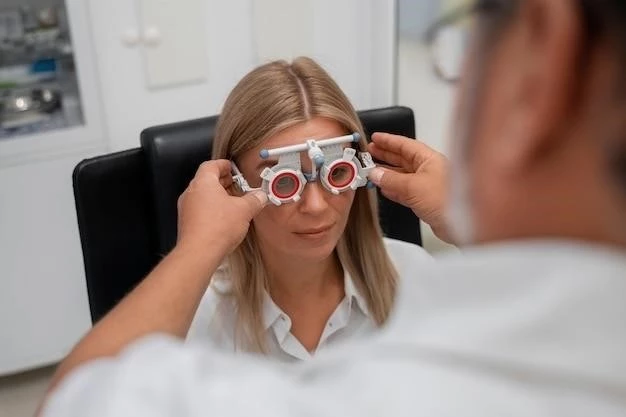Introduction
Nephrotic syndrome is the most common glomerulopathy among children aged 2-18 years. Potentially blinding ocular complications often result from nephrotic syndrome and/or its treatment.
Nephrotic syndrome, common in children, is managed with corticosteroids but may lead to potentially blinding ocular complications. Studies have highlighted the prevalence and predictors of these complications. Genetic forms of focal and segmental glomerulosclerosis have been associated with various ocular abnormalities. Pierson Syndrome, a rare condition, is characterized by nephrotic syndrome and distinct ocular and neurologic abnormalities. Understanding the clinical presentation and impact of such ocular anomalies on disease outcome is crucial in the diagnosis and management of nephrotic syndrome.
Nephrotic syndrome, common in children, is managed with corticosteroids but may lead to blinding ocular complications. Studies explore prevalence and predictors of these complications. Genetic FSGS forms are associated with various ocular abnormalities. Pierson Syndrome is a rare condition combining nephrotic syndrome with unique ocular and neurologic abnormalities. Clinical understanding is crucial for diagnosis and management.
Study on the Prevalence and Predictors of Ocular Complications
Research conducted on children undergoing treatment for nephrotic syndrome aimed to determine the prevalence and predictors of ocular complications. Genetic forms of focal and segmental glomerulosclerosis were studied, revealing associations with various ocular abnormalities. Notably, Pierson Syndrome, a rare autosomal recessive condition, showcases distinctive nephrotic syndrome paired with specific ocular and neurologic anomalies. Understanding these findings is crucial.
Genetic Forms and Ocular Features
Genetic forms of focal and segmental glomerulosclerosis (FSGS) often exhibit extra-renal manifestations, including various ocular abnormalities associated with specific genes. Pierson Syndrome, an autosomal recessive disorder, showcases distinctive nephrotic syndrome paired with unique ocular and neurologic abnormalities, emphasizing the heterogeneity of ocular features in such genetic conditions.
Association of FSGS-Associated Genes with Ocular Abnormalities
Genetic studies have identified numerous FSGS-associated genes exhibiting extra-renal manifestations. Research on these genes from the Genomics England Renal proteinuria panel has revealed several reported and likely ocular features associated with 32 out of the 55 genes studied. Notably, 58% of these genes showed links to ocular abnormalities in human diseases, emphasizing the significance of genetic factors in the development of ocular anomalies in nephrotic syndrome cases. This provides valuable insights into the genetic underpinnings of ocular abnormalities in FSGS patients.
Clinical Presentation
The clinical presentation of nephrotic syndrome includes massive proteinuria, hypoalbuminemia, hyperlipidemia, and edema. Patients may develop varying ocular anomalies as a result of this condition.
Overview of Nephrotic Syndrome and Ocular Anomalies
Nephrotic syndrome, common in children, is managed with corticosteroids but may lead to potentially blinding ocular complications. Studies have explored the prevalence and predictors of these complications. Genetic forms of focal and segmental glomerulosclerosis have been associated with various ocular abnormalities. Pierson Syndrome, a rare autosomal recessive disease, comprises distinctive nephrotic syndrome and unique ocular and neurologic abnormalities. Understanding these clinical presentations and their impact is crucial in the diagnosis and management of nephrotic syndrome.
Specific Syndromes
Pierson Syndrome is a rare autosomal recessive disorder characterized by congenital nephrotic syndrome and unique ocular and neurologic abnormalities caused by mutated LAMB2 gene. The phenotype can vary significantly among affected individuals.
Pierson Syndrome⁚ Nephrotic Syndrome with Ocular Findings
Pierson Syndrome is an autosomal recessive disorder characterized by congenital nephrotic syndrome and distinct ocular abnormalities. The syndrome is caused by mutations in the LAMB2 gene, resulting in a variable phenotype among affected individuals. Ocular manifestations can include microcoria, hypoplasia of ciliary and pupillary muscles, and other anomalies. Early mortality is common in affected individuals, emphasizing the severity of this condition.

Diagnosis and Management
In diagnosing nephrotic syndrome ocular anomalies, identifying symptoms like proteinuria, hypoalbuminemia, edema, and hyperlipidemia is crucial. Management often involves corticosteroids, considering the potential ocular complications associated with nephrotic syndrome.
Diagnostic Journey and Treatment Approaches
The diagnostic journey for nephrotic syndrome ocular anomalies involves identifying symptoms like proteinuria, hypoalbuminemia, edema, and hyperlipidemia, which are common clinical features. Treatment approaches often include high-dose corticosteroids, considering the potential impact on ocular health associated with nephrotic syndrome.
Rare Disease Information
About the rare Pierson Syndrome, characterized by congenital nephrotic syndrome, ocular, and neurologic abnormalities caused by mutations in the LAMB2 gene. The condition presents a variable phenotype.
GARD Information on Nephrotic Syndrome Ocular Anomalies
GARD currently aims to provide comprehensive information on the rare disease of Nephrotic Syndrome Ocular Anomalies. This includes population estimates, symptoms, causes, and more. Stay informed for updates on this condition.

Complications and Prognosis
Children with nephrotic syndrome faced ocular complications like cataracts, potentially affecting their vision, highlighting the importance of monitoring and managing such complications for better outcomes.
Impact of Ocular Anomalies on the Disease Outcome
Children with nephrotic syndrome may face complications like cataracts, impacting their vision. Monitoring and managing these ocular issues are essential for improving disease outcomes and preserving visual acuity, especially considering the potential long-term effects on eye health associated with this condition.
